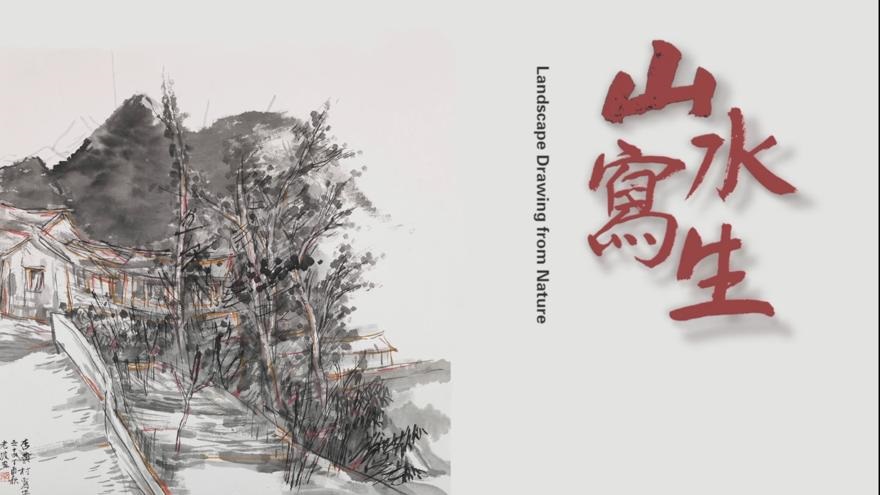
当前课程知识点:Medical Virology > Chapter 7 Other Important Human Viruses > 7.1 Arbovirus > Arbovirus
返回《Medical Virology》慕课在线视频课程列表
Arboviruses
虫媒病毒
Start from a case:
先来看一个案例
A 20-year-old college student
20岁大学生
developed fever, chills,
出现发热、寒战
severe headache,
严重的头痛
pain around the eyeballs,
眼周疼痛
and muscle and bone pain a day ago.
肌痛和骨痛等症状1天
He was found to have a generalized
检查发现
macular rash when he was checked
全身
in the hospital.
皮疹
He went fishing and was bitten
1周前他去钓鱼时
by a lot of mosquitoes a week ago.
被很多蚊子叮咬
Questions are:
问题来了
What organism is the likely cause
哪种微生物
of this condition?
最可能引起这些情况
Why did he become infected?
他是怎么被感染的?
How do we treat him and protect others?
如何治疗及保护其他人呢?
Let's get to know some diseases
我们先来了解
transmitted by mosquitoes.
通过蚊传播的疾病
Mosquitoes are arthropods.
蚊是节肢动物
The arthropod-borne viruses
节肢动物传播的病毒
are arboviruses.
称为虫媒病毒
Arboviruses are transmitted by
虫媒病毒一般通过
arthropods that bite and feed on blood,
吸食血液的节肢动物传播
primarily mosquitoes and ticks.
主要是蚊和虱
The main characteristics
虫媒病毒的
of arboviruses are:
主要特点有
1.Using blood-sucking
1.吸血的节肢动物
arthropods as vectors;
是病毒的传播媒介
2.Causing seasonal
2.疾病具有季节性
and district-specific diseases.
和明显的地域性
Learning objectives:
以下是本节课的学习目标
At the end of this session,
本节课学习结束后
you should be able to
你应该能够
List the important arboviruses
列举重要的虫媒病毒
and the associated diseases;
及其所致疾病
Describe the biological properties,
描述登革病毒的生物学性状
pathogenicity,
致病机制
immunity and prevention of dengue virus.
免疫和预防方法
Arbovirus is a collective name
虫媒病毒是
for a large group of diverse viruses,
一大类病毒的总称
more than 400 species.
总数超过400种
Most arboviruses are classified
重要的虫媒病毒
in three families,
可以分为3个病毒科
Flaviviridae,
黄病毒科
Togaviridae,
披膜病毒科
and Bunyaviridae.
布尼亚病毒科
In general,
通常
they are named either after the place
根据首次发现这些病毒
where they were first identified, e.g.
的地名来命名病毒
Japanese encephalitis virus,
例如,日本脑炎病毒
or after the diseases they cause, e.g.,
或者根据病毒引起的疾病命名
yellow fever virus.
例如,黄热病病毒
The diseases caused
虫媒病毒所致疾病的
by arboviruses range in severity
临床症状的严重程度不等
from mild to rapidly fatal.
可从轻微到迅速致命
The clinical manifestation usually
临床表现通常是
fits one of the three scenarios:
以下三种表现之一
encephalitis,
脑炎
hemorrhagic fever,
出血热
or fever with myalgias,
或者发热伴肌痛
arthralgias,
关节痛
and nonhemorrhagic rash.
和非出血性的皮疹
After recovery from the disease,
痊愈后
immunity is usually lifelong.
一般可获得终身免疫
I will just introduce dengue virus
这节课
in this session.
我们只讨论登革热病毒
I’ll leave you to learn the other
其他病毒的相关内容
viruses by yourself.
留给同学们课后自学
Dengue virus is a member
登革病毒
of the virus family Flaviviridae.
属于黄病毒科
“Flavi-” means yellow.
“Flavi-”表示黄
Flaviviruses are characterized
黄病毒属成员的特征是
by an icosahedral nucleocapsid
核衣壳是二十面体
surrounded by an envelope
外有包膜
and a single stranded,
病毒核酸是
positive-sense RNA genome.
单正链RNA
They are small viruses,
很小
with 30 to 40 nm diameter.
直径30-40 nm
The E protein on the envelope
包膜蛋白(E蛋白)
has the hemagglutinin activity.
有凝血活性
Dengue virus (DENV)
登革病毒
The origin of the word dengue
单词“dengue”的来源
is not clear,
尚不明确
but one theory is that the word "dengue"
但是有这样的说法
means fastidious or careful,
单词“dengue”表示“小心谨慎的”
which would describe the gait of these
可以用来描述患者
patients with bone & joint pain.
在骨骼和关节疼痛时的步态
Here is some Information
以下是WHO网站里的
from WHO website.
一些信息
Dengue is the fastest spreading
登革热是世界上
vector-borne viral disease.
传播最快的虫媒病毒性疾病
The global incidence of dengue has
近几十年来
grown dramatically in recent decades.
全球登革热发病率显著上升
About half of the world's population
现在,全世界约一半人口
is now at risk.
有患登革热的风险
There are an estimated 100-400 million
每年估计有1-4亿
infections each year.
感染病例
Pathogenicity of dengue virus
登革病毒的致病性
Natural hosts are monkey and human.
人类和灵长类动物是登革病毒的自然宿主
The viruses are transmitted
登革病毒
to people through
通过受感染的伊蚊的叮咬
the bite of an infected Aedes mosquito.
传播
These mosquitoes also spread Zika,
这些蚊子也传播寨卡病毒
chikungunya and other viruses.
基孔肯雅病毒和其他病毒
Humans is the reservoir
人类是登革病毒
for dengue virus,
的储存宿主
but monkeys in the jungle is another
丛林里的猴也是
reservoir and other Aedes species
其他种类的伊蚊
may also act as vectors.
也可作为传播媒介
Because of the high level of viremia
因为感染者体内
in an infected person,
严重的病毒血症
the virus can be efficiently transmitted
登革病毒无需扩增宿主
between mosquitoes
就可以有效地在
and humans without
蚊子和人类
an amplification host.
之间传播
Latent period is 4 to 7 days.
潜伏期为4-7天
There are four distinct dengue virus
登革病毒
(DEN) serotypes
有四个血清型
(DEN-1, DEN-2, DEN-3 and DEN-4),
(DEN-1, DEN-2, DEN-3 和 DEN-4
meaning an individual
意味着一个人
could be infected four times.
可以被登革病毒感染四次
Most of the affected are asymptomatic.
大多数感染者无症状
About one in four people infected
其中约1/4
with dengue will get sick.
会发病
For people who become ill with dengue,
感染者的症状
symptoms can be mild or severe.
有轻有重
Dengue fever (break-bone fever)
登革热(断骨热)
usually include flu-like symptoms
通常会出现流感样症状
such as high fever,
例如高热
severe headache,
严重的头痛
pain behind the eyes,
眼后痛
joint and muscle pain and rash.
关节和肌肉痛和皮疹
Most people recover from dengue
很多人几天后
fever after a few days.
痊愈
In more severe cases (about 1%),
在病情较重的案例(约1%)中
the infected person may develop dengue
感染者可能会出现
hemorrhagic fever (DHF).
登革出血热(DHF)
Dengue hemorrhagic fever
登革出血热
is a much more severe disease,
是一个很严重的疾病
with a fatality rate approaching 10%.
死亡率达10%
However with proper medical care,
但经过合适的治疗
only 1% will eventually succumb.
患者死亡率可降至1%
The initial symptoms are usually typical
登革热初期症状通常很典型
but rapid deterioration ensues.
但病情会迅速发展恶化
Bleeding under the skin,
随后会出现皮下出血
severe abdominal pain
严重腹痛
and vomiting will soon follow.
呕吐的症状
Dengue hemorrhagic
登革出血热
fever can lead to shock,
会导致休克
which we call dengue
即登革休克综合征
shock syndrome (DSS).
(DSS)
Immunity:
免疫性:
Humans can produce
人可以产生
anti-dengue virus antibodies.
登革热病毒抗体
But these may be
但这些抗体不是
non-neutralizing antibodies.
中和性抗体
Antibody (Ab)-dependent enhancement
抗体依赖增强作用在
of viral replication occurs when
再次感染登革病毒时
non-neutralizing Abs bind
非中和抗体
to infectious dengue virus
结合登革病毒颗粒时
particles during a subsequent infection.
出现
The non-neutralizing Ab-virus
非中和性抗体与病毒
complex attaches to the Fc receptors (FcR)
形成的免疫复合物结合到
on circulating monocytes,
血液循环中的单核细胞表面的Fc受体
thereby facilitating the infection of FcR
增强病毒对有Fc受体的细胞的
cell types which would otherwise
感染作用
not be readily infected.
提高了细胞的易感性
The outcome is an increase
结果导致
in the overall viral replication,
病毒复制增加
leading to the potential
病人可能
for more severe disease.
患上更加严重的疾病
Lab Diagnosis:
实验室诊断:
Demonstration of viral RNA by PCR.
通过PCR检测病毒RNA
Serologic tests to detect the antibodies.
通过血清学检查检测抗体
IgM suggests
检测到IgM抗体表明
a recent dengue virus infection.
病人最近感染登革病毒
IgG measurement in a single serum
单份血清的IgG抗体检测
sample is not helpful because
没有诊断意义
it remains detectable
因为第一次感染登革病毒后
for life after the first dengue infection.
终生可检测到IgG抗体
Four-fold increase of IgG titer
IgG抗体水平呈4倍升高
is of diagnostic value.
有诊断意义
Prevention & Control:
防治措施:
There is no specific treatment
目前没有对登革热的
for dengue fever,
特异性治疗
supportive management should
应该对
be provided
出现症状的患者
for those who are symptomatic.
进行支持性治疗
The only current method of controlling
目前预防登革病毒传播
or preventing dengue virus transmission
的唯一手段
is to effectively combat
是防蚊
the mosquito vector.
灭蚊
There is a vaccine:
目前有重组四价减毒活疫苗
Dengvaxia® (CYD-TDV) .
Dengvaxia® (CYD-TDV)
The vaccine is targeted
这种疫苗适用于
for people 9-45 years
9-45岁
of age living in endemic areas,
在流行病区居住
who have had at least 1 documented
至少感染过1次
dengue virus infection.
登革病毒的人
Summary of dengue virus.
以下是对登革病毒的总结
Biological properties:
生物学性状
spherical, =20-30 nm,
球形,直径20-30nm
icosahedral, +ssRNA,
二十面体,+ssRNA
enveloped, 4 serotypes.
有包膜,有4个血清型
Pathogenicity:
致病性:
Sources are infected monkey and human.
传染源是感染的猴和人
Vector is Aedes.
传播媒介是伊蚊
Clinical findings include dengue fever,
临床症状包括登革热
DHF, and DSS.
DHF和DSS
Immunity: antibody-dependent enhancement
免疫性:抗体依赖的增强作用
Laboratory diagnosis:
实验室诊断:
detection of genome or antibody
检测病毒核酸或者抗体
Prevention and control: mosquito control
防治原则:防蚊灭蚊
We are done with dengue virus.
我们已经完成了登革病毒的学习
Besides dengue virus,
除登革病毒之外
Japanese encephalitis virus,
日本脑炎病毒
Russian spring-summer encephalitis virus,
俄罗斯春夏脑炎病毒
yellow fever and West Nile virus
黄热病病毒和西尼罗病毒
are all flaviviruses.
都是黄病毒
They have similar biological properties,
它们有相似的生物学性状
and cause febrile disease,
会引起发热
hemorrhagic fever and/or encephalitis.
出血热和/或者脑炎
All of them are transmitted
除了俄罗斯春夏脑炎病毒
by mosquitoes expect Russian
通过蜱传播外
spring-summer encephalitis virus,
上述病毒都
which is spread by ticks.
通过蚊传播
Eastern and western equine encephalitis
西方和东方马脑炎病毒
viruses are togaviruses
是披膜病毒
with mosquitoes as vectors.
它们的传播媒介是蚊
Crimean-Congo hemorrhagic fever (CCHF)
克里米亚-刚果出血热病毒
virus and yellow fever virus,
和黄热病病毒
similar to dengue virus,
与登革病毒相似
can cause bleeding and fever.
可以导致出血和发热
So they are also grouped
所以它们都属于
into hemorrhagic fever viruses,
出血热病毒
which will be discussed
下节课我们会讨论
in the next session.
出血热病毒
Now, let's see the case again.
现在,让我们一起看看开始的案例
What organism is the likely cause
最可能导致这名大学生发病
of our college student’s condition?
的微生物是哪一种?
The most likely cause is dengue virus.
最可能的是登革病毒
The preliminary diagnosis
根据他的症状、体征
is based on the symptoms & signs
和病史
and the history:
可以作出初步诊断:
high fever, headache,
高热、头痛
pain around eyeballs,
眼周疼
muscle and bone pain and rash,
肌肉和骨骼的疼痛以及皮疹
and bitten by mosquitoes a week ago.
1周前被蚊子叮咬
The infection can be confirmed
可以通过检测
by the detection of dengue
登革病毒的特异性IgM抗体
virus-specific IgM antibody.
确认是否感染
Why did he become infected?
他为什么会感染?
Because he has been bitten
因为他曾被感染登革病毒
by the infected mosquitoes!
的蚊子叮咬
How do we treat him and protect others?
应该如何治疗他并保护其他人呢?
There is no specific treatment
没有对登革热的
for dengue fever,
特异性治疗
we can only provide him
我们只能对他进行
with supportive measures.
支持性治疗
We can also offer him the vaccine after
痊愈后
he recovers from this infection.
可以给他接种疫苗
Mosquito vector control
防蚊
is an important preventive measure.
是很重要的预防措施
Hope you can answer them correctly
希望你能正确回答这些问题
and enjoy the learning process.
并且享受学习的过程
It is arbovirus.
这是虫媒病毒
Next session
下节课
we’ll discuss hemorrhagic fever virus.
我们会讨论出血热病毒
Thank you for your attention.
谢谢同学们
See you next time.
我们下次再见
-Learning Objectives & References
-Assessment Plan of Medical Virology
-To apply basics to clinical case
-1.1 Viral Structure and Composition
--Viral Structure and Composition
--Shapes and relative sizes of viruses
-1.2 Viral Replication
-1.3 Viral Genetics and Classification
--Viral Genetics and Classification
-1.4 Pathogenesis of Viral infection
--Pathogenesis of Viral infection
-1.5 Lab Diagnosis and Host Rsponse to Viral Infection
--Lab Dignosis and Host Rsponse to Viral Infection
-General Virology Quiz
-2.1 Influenza Virus: Biological Properties 1
--Influenza Virus: Biological Properties 1
-2.2 Influenza Virus: Biological Properties 2
--Influenza Virus: Biological Properties 2
-2.3 Influenza Virus: Biological Properties 3
--Influenza Virus: Biological Properties 3
-2.4 Influenza Virus: Lab, Treatment and Prevention
--Influenza Virus: Lab, Treatment and Prevention
-2.5 Paramyxovirus
-2.6 Coronavirus and Rubella virus
--Coronavirus and Rubella virus
-Viruses Transmitted Through Respiratory Route Quiz
-3.1 Diseases Caused by Enteroviruses
--Diseases Caused by Enteroviruses
-3.2 Poliovirus Infection and Viron of Enterovirus
--Poliovirus Infection and Viron of Enterovirus
-3.3 Lab Diagnosis & Prevention of Enterovirus
--Lab Diagnosis & Prevention of Enterovirus
-3.4 Viruses Causing Acute Gastroenteritis
--Viruses Causing Acute Gastroenteritis
-Viruses Transmitted Through Fecal-oral Route Quiz
-4.1 General Properties of HIV
-4.2 Replication of HIV
-4.3 Pathogenesis and Immunity of HIV
--Pathogenesis and Immunity of HIV
-4.4 Epidemiology and Lab Diagnosis of HIV/AIDS
--Epidemiology and Lab Diagnosis of HIV/AIDS
-4.5 Treatment, Prevention and Control of HIV/AIDS
--Treatment, Prevention and Control of HIV/AIDS
-HIV Quiz
-5.1 HSV
--HSV
-5.2 VZV
--VZV
-5.3 EBV, CMV and HHV 6-8
-Herpes Viruses Quiz
-6.1 HAV and HEV
-6.2 HBV, HCV and HDV
-Hepatitis Viruses Quiz
-7.1 Arbovirus
-7.2 Hemorrhagic Fever Virus
-7.3 Rabies Virus
-7.4 HPV
--HPV
-7.5 Prion
--Prion
-Other Important Human Viruses Quiz


